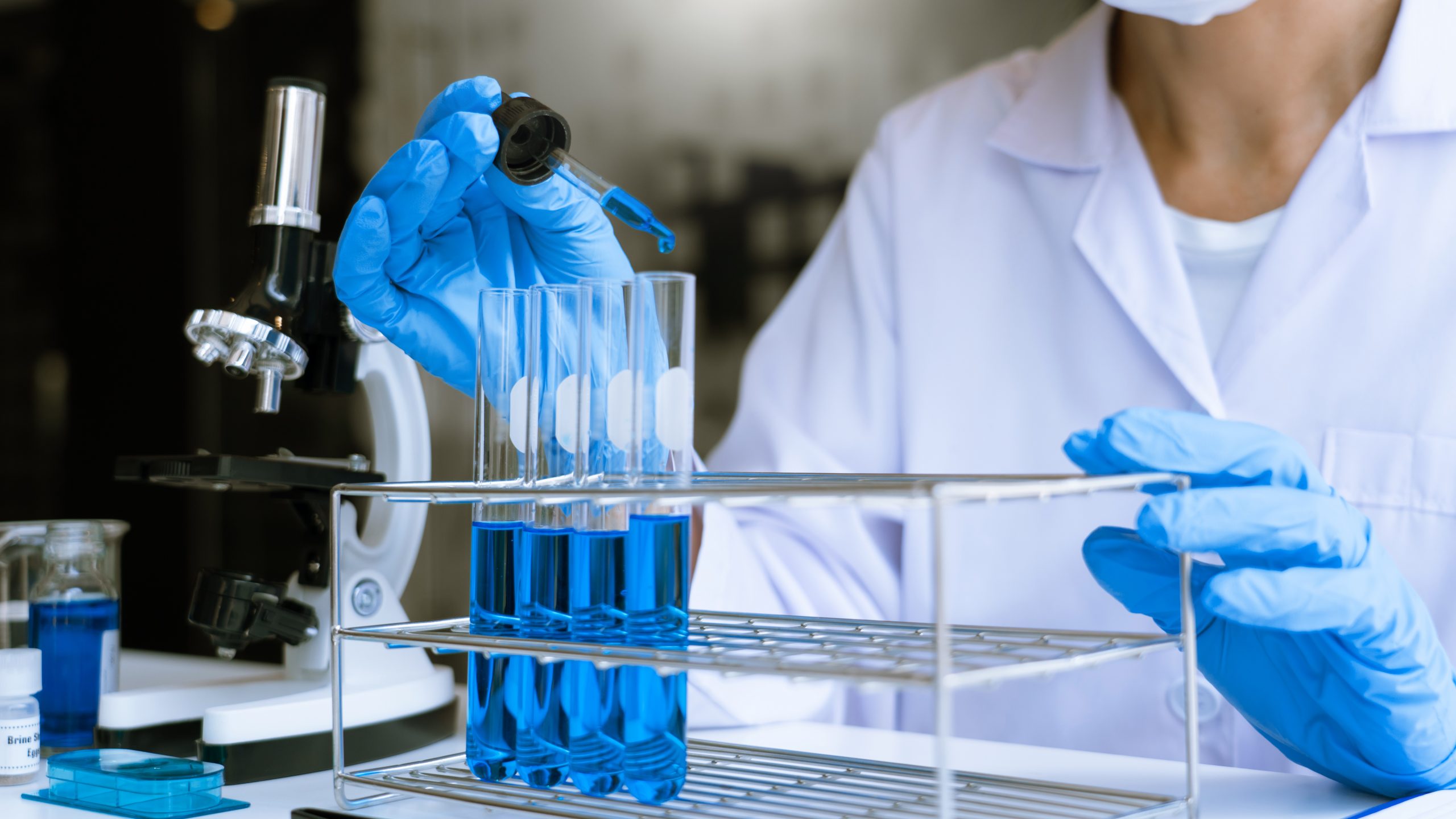The main difference between organic and inorganic chemistry is the presence (or absence) of carbon in the compounds that are being studied, processed, or synthesised.
The main concern of organic chemistry is compounds that have carbon or carbon chains in them, like hydrocarbons or proteins. Inorganic chemistry, on the other hand, is concerned with things like metals, minerals, and organometallic compounds.
In terms of methodologies, techniques, and fundamental concepts, both organic and inorganic chemistry deal with various types of compounds, chemical reactions, and properties.
In this article, we’ll explore the similarities, differences, and relationship between organic and inorganic chemistry.
What Is Organic and Inorganic Chemistry?
Both organic chemistry and inorganic chemistry are concerned with the properties, reactions, structures, and synthesis of various chemicals:
- Organic chemistry is focused on compounds produced by living organisms, or synthetic chemicals that have chains of carbons in them, like plastic polymers.
- Inorganic chemistry is focused on inorganic, simple compounds, like carbon dioxide or cyanides, and organometallic compounds, like transition metals.
Both of these scientific branches use analytical laboratory techniques and instrumentations to study the behaviors and reactions of the compounds within their discipline. There are three key areas that are looked at:
- Properties of substances: This refers both to physical properties, like melting points or density, and chemical properties, like reactivity, toxicity, or the types of bonds being created.
- Reactivity of compounds: The reactivity of chemicals, which include the rate and intensity of reactions, is a crucial behavioural factor that is studied in both inorganic and organic chemistry.
- Structure of substances: This refers to how atoms are arranged into molecules of specific shapes and angles. The shapes of molecules are largely determined by the molecular bonds, which are based on the valence electrons.
Once the properties, reactivity, and structure of a compound have been determined, this information serves as the basis for synthesising that substance or creating an analogue of it. For example, the scents of fruits can be mimicked using synthetic chemical analogues.
How Is Organic Chemistry Distinguished From Inorganic Chemistry?
Organic chemistry can be distinguished from inorganic chemistry by looking at the types of compounds each field studies. We’ll start with inorganic chemistry, which is all about understanding the properties of inorganic substances. This branch also deals with synthesising various inorganic chemicals that have economic and industrial value, including ammonia, chlorine, and hydrochloric acid.
Meanwhile, organic chemistry is focused on studying and synthesising any carbon-based compound, like hydrocarbons, as well as their derivatives, like plastics. In this way, organic chemistry has some overlaps with inorganic chemistry:
- The chemical industry and pharmaceutical industry synthesise and mass produce various types of products that are based on the fusion or overlaps between inorganic and organic chemistry
- Products such as pigments, coatings, fuels, and medications are made possible by both inorganic and organic chemistry
- Overlaps between inorganic and organic chemistry are particularly notable in the subdiscipline of organometallic chemistry
Organic chemistry also has overlaps with biochemistry, which plays an important part in this discipline because both subjects look at organic reactions and study important biochemical molecules. That said, compared to organic chemistry, biochemistry is more specifically focused on the complex chemical processes in living organisms, such as how proteins fold in specific ways to form certain enzymes or hormones.

How to Dispose of Organic and Inorganic Waste
There are proper ways to dispose of organic and inorganic waste, depending on which type you have. You can also find these protocols and procedures formalised in local ordinances, national laws, regional regulations, and international treaties.
Both organic and inorganic waste have potentially hazardous environmental impacts, as well as associated health risks. At the same time, not all wastes have the same potential to cause harm:
- Some types of organic waste are biodegradable and can easily dissipate in the environment, making them simple to dispose of
- Some types of inorganic waste products, like gas treatment residues, need to be handled and disposed of carefully because of their impact on the environment
- There are also hazardous types of waste that are both organic and inorganic, like oily sludges, that also have special disposal guidelines
Therefore, the appropriate disposal method of any waste product will depend on what it is and how hazardous it is. For instance, liquid waste shouldn’t be disposed of in any body of water.
Generally, waste can be classified into four main categories, and they all contain a mix of organic and inorganic compounds:
- Liquid waste: This includes sewage water, crude oil spills, and industrial solutions or solvents. This type of waste usually contains inorganic chemicals, and has to undergo multi-stage treatment to either completely remove the toxic residue or neutralise it. For example, liquid waste used in making paper, like lye solutions, should be neutralised before being disposed of so that the high alkalinity is removed.
- Solid waste: This type of waste includes things like glass, ceramics, plastic or paper, as well as wood scraps and metallic or alloy wastes. Many of these products are either recyclable or reusable. Others are potentially hazardous, particularly the metallic waste from batteries, like lead or cadmium. Solid waste can either be disposed of in landfills or via incineration, depending on what it is.
- Biodegradable waste: These are organic waste products, like rotting meat, fruit peelings, vegetables, other food items, and papers. Ideally, organic waste should be disposed of through composting or incineration. Organic waste products from large livestock farms can even be processed as a source of fuel, particularly methane.
- Hazardous waste: This can be further subdivided into several categories, such as biologically hazardous waste, explosive or flammable waste, corrosive waste, toxic waste, and radioactive waste. Depending on the potential harm it may cause, disposal protocols may vary, but if it cannot be neutralised, incinerated, or sent to a sanitary landfill, hazardous waste should be isolated, sealed in protective containers, and buried in specially designed disposal areas.
Are Metals Organic or Inorganic?
All metals are inorganic because they’re either in elemental forms or alloy forms. Even if they contain traces of carbon, such as in the case of steel, they’re not chemically bonded to carbon, nor does carbon serve as the dominant backbone element. This is why metals are inorganic.
Are Vitamins Organic or Inorganic?
All vitamins are organic compounds because they contain carbon and are synthesised in living organisms. The human body needs 13 types of vitamins, which are classified as micronutrients that mainly serve as coenzymes to facilitate metabolic processes. Vitamins can be grouped into two main classes:
- Fat soluble vitamins, which include vitamins A, D, E, and K
- Water-soluble vitamins, which include ascorbic acid or vitamin C, thiamin, riboflavin, niacin, vitamin B6 folacin, vitamin B12, biotin, and pantothenic acid
Vitamins are present in virtually all living organisms at varying levels. Some are synthesised by animals through their skin and liver, while others can be found in a wide range of plants. Vitamins always contain carbon in various arrangements and chemical combinations, along with other functional groups or elements. This is why all vitamins are organic.

Is Nitric Acid Organic Or Inorganic?
We know that nitric acid is an inorganic compound because its chemical formula (HNO3) tells us that each molecule in this compound has one hydrogen atom, one nitrogen atom, and three oxygen atoms.
Although it’s used as a precursor to nitrogen organic compounds, nitric acid itself obviously doesn’t contain any carbon, which is why it’s classed as an inorganic compound.











